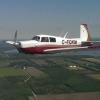Question for our math professor: Turning point over water?
-
Members Online
- eman1200
- Andy95W
- Justin Schmidt
- mluvara
- PT20J
- TCC
- IvanP
- AJ88V
- blankc
- Aerodon
- Marcopolo
- Sabremech
- 1980Mooney
- varlajo
- Marc_B
- Schllc
- MikeOH
- kortopates
- Jetdriver
- TaildraggerPilot
- ericrynehess
- Kirch56H
- exM20K
- CCAS
- Skyland
- buddy
- redbaron1982
- piperdown85
- Ragsf15e
- Stubby
- slowflyin
- Planegary
- Yetti
- Greg Ellis
- NickG


Recommended Posts
Join the conversation
You can post now and register later. If you have an account, sign in now to post with your account.